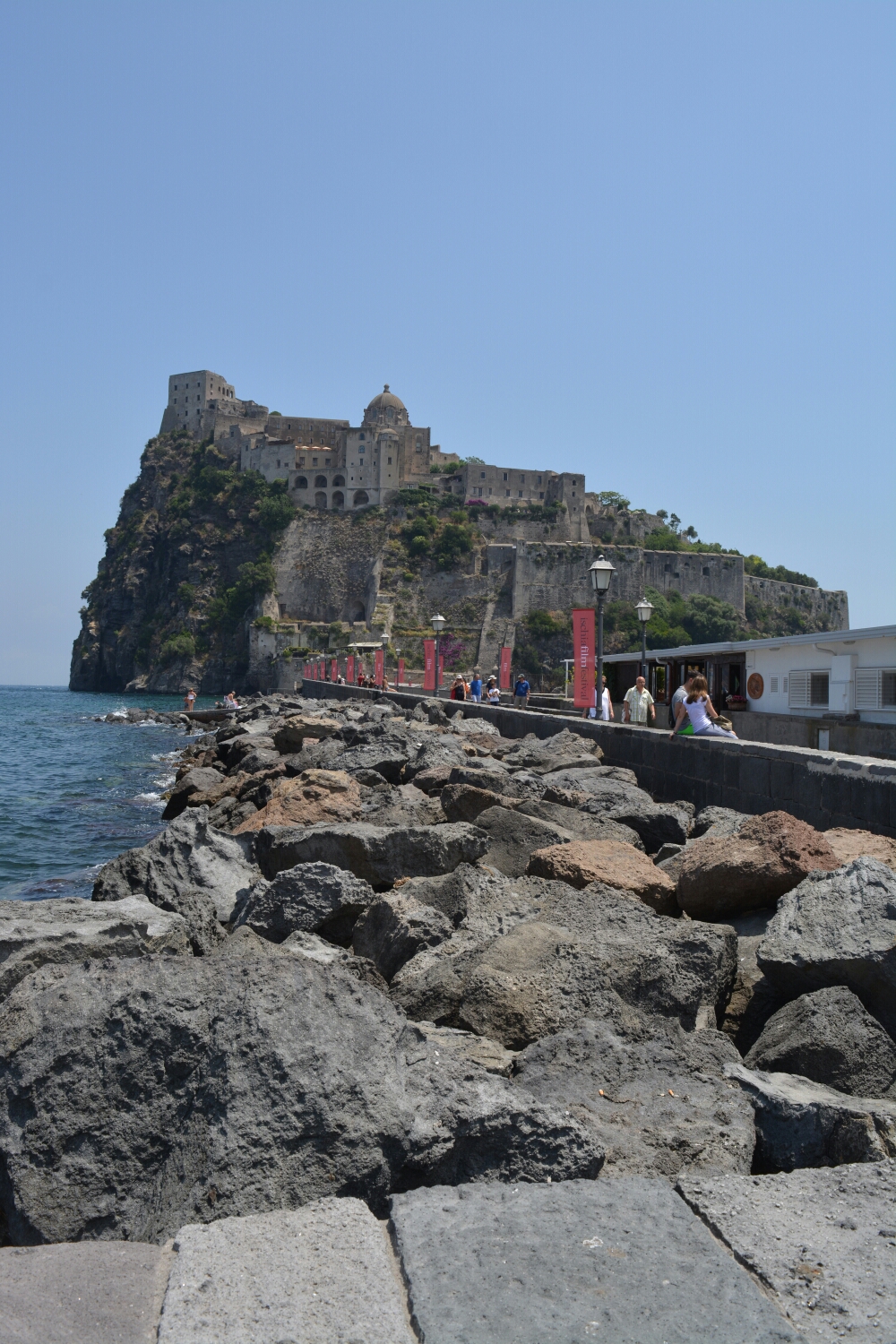What to say about the past week digging at Aeclanum…
Perhaps I’ll start from the end and work my way to the beginning, just to keep everyone on their toes.
As the title of this post suggests, the Apolline Project’s team of students and supervisors at the site of Aeclanum were rained out Thursday afternoon. Thunderstorms moved into the valley of Mirabella Eclano and rained heavily. Forecasts suggested more rain later and another full day of it on Friday. Depending on where you hail from and who you’re digging for, rain doesn’t stop excavation activities. The Irish members of our team were bragging about how their colleagues would laugh, and then crack the whip to continue workflow. Fortunately Ferdinando, our director, does not share that opinion and released us early to go back to Pollena Trocchia and wherever else we felt it appropriate to spend the (now long) weekend.
Where did Justin and I choose to go? Ischia, of course! A small island only an hour ferry ride from Naples laden with beaches, sunshine, and hotsprings. The island is a favorite destination for Italians during Ferragosto, the summer holiday season during the month of August. We stayed two nights at a cozy place called The Ring Hostel. The hotel’s owner, Lorenzo, greeted us warmly, remembering our group from last year. He treated us to an amazing dinner at his mother’s restaurant (I had the rabbit and it was delicious), a late-night swim at the hotsprings with virtually unlimited wine, and a barbecue the next night (all for a super low cost). I used the Wi-Fi to catch up on Veep and some much needed laughs and we met some cool people. We got to treck through the island’s castle, whose history extends back to the 5th century BC, although what is visible is the result of rebuilding in the Middle Ages onward.



A hard half-week’s digging warranted the mini-vacation. Three days of digging were devoted to three main tasks: searching for architectural remains beneath a huge mound of backfill left by previous excavators; perfecting the drawing of the stratigraphic profile on the Southeast wall of the trench; and continuing excavating the square we opened, going below the depth of the medieval packed floor. Justin took charge of the drawing, while I oversaw excavation in the square and we took turns hacking away at the enormous backfill pile.
Due to the learning curve that comes with the task, it took our students the better part of the week to make a detailed drawing of our complex stratigraphic profile. The end result, however, was one that pleased both our field director Santa, and our project director, Ferdinando.

By Tuesday, we had removed nearly two meters of soil and finally found material that belonged to what appears to be a low wall (or perhaps the lower courses of a taller one). What we found had been previously excavated. How did we know? We found a laminated context tag used to identify aspects of the trench by the last archaeologists working there. The work was hard and helped us break a good sweat. Sometime soon, we’ll have a backhoe remove the bulk of the backfill left in the area and we can tell the operator how far to go so as not to damage the underlying wall.

As for excavating the trench, well, we made a hole. (According toprocedure in stratigraphic excavation, that’s not really a good thing.) It started last week as some loose backfill made of rocks. They came undone while removing the thin layers above our current context due to a process called “pitting” (or over-zealously removing soil by excavators not being carefully enough attended by their supervisors). No big deal, just leave that area alone, right? We’ll make that area level as we remove the next layer. Or not. As the area got trampled over the “pit” continued to get slightly larger and more loose material became dislodged. Ferdinando noticed and implored us to clean up the loose material. We tried, but that just made more loose material. Fast forward to Wednesday afternoon and we found the limits of this loose material. We uncovered a hole roughly three-quarters of a meter deep that extends beyond the limits of our excavation square, with boundaries defined by the compacted medieval surface and an area of the same material just more compacted, and no artifacts. This, ladies and gentlemen, is what we call a stratigraphic nightmare. Needless to say, my OCD has gone haywire.

All of this being said, we didn’t actually excavate improperly. The loose material is actually part of another context, that being the fill inside a cut made probably by a digging machine. The only mistake was removing too much material earlier and not recognizing the difference immediately. Phew. We made an eyesore, but thats how the layers sit in the ground and that’s just how archaeology goes sometimes.

Oh well. While writing this, I was concluding my vacation with a delicious red orange and chocolate gelato.


Leave a comment